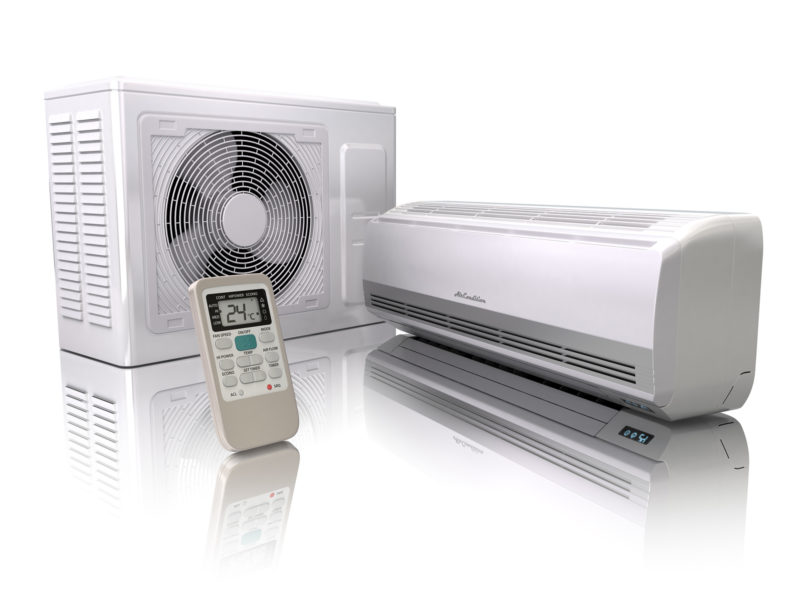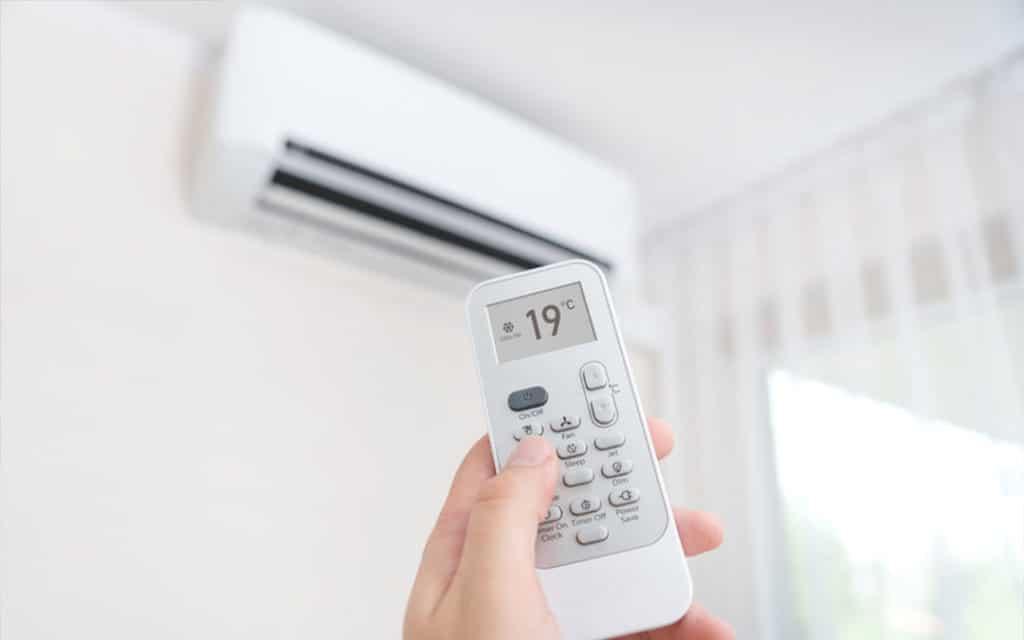The ductless mini-split system has grown in popularity in recent years. And for a variety of reasons! They are among the most energy-efficient and comfortable heating and cooling systems available today on the market. They are beautifully efficient and consistently provide room comfort. However, the decision to install or acquire one is quite different for every homeowner.
In today's post, we'll look at why homeowners should consider ductless mini-split systems as a viable solution to their heating and cooling needs. We will list down the advantages and disadvantages of a ductless hvac system . But first let's understand what ductless hvac systems are.
What are Ductless HVAC Systems?

Ductless cooling and heating systems, as the name suggests, operate without the use of ductwork. These systems are made up of two separate units: an outdoor compressor and an indoor evaporator. The indoor unit is in charge of introducing cool and conditioned air into the living space, while the outdoor unit is in charge of ejecting the absorbed heat outside. Both units are linked by a small hole in the wall.
Wall-mounted mini-splits are the most common type of ductless system. For wall-mounted mini-splits, the indoor unit is mounted high up on the wall, while the outdoor unit is almost directly on the other side of the wall, either on the ground or mounted on the wall itself.
For a more detailed overview of ductless mini split HVAC systems, give our what is a ductless HVAC system a read, and to understand how ductless mini split works, also give our how does ductless HVAC work a read.
Advantages of Ductless Cooling and Heating Systems

There are numerous advantages to using ductless cooling and heating systems, Here are some of the benefits ductless HVAC systems offer
1. Less Operating Expenses for Ductless Cooling & Heating System
For most of us, this is the bottom line. Why not? We all like appliances that help us save money on our monthly energy bills. It is also vital for the environment that we reduce our carbon footprint.
Ductless HVAC systems are significantly less expensive to operate than ducted HVAC. In fact, Mitsubishi claims that compared to a forced-air system, they can save 30-40% on energy costs. But how do they manage it? The primary reason is the lack of ductwork. Ducts are the most common source of air leakage in ducted systems. Tears, gaps, improper installation, and ruptures, among other things, all contribute to conditioned air leaking out and becoming a waste of energy. The US Department of Energy estimates that homes with central air conditioning use up to 30% more energy only due to leaking ducts.
2. Ductless HVAC Have Greater Efficiency
SEER and EER are ratings that you may have heard about when looking for an air conditioning or heat pump system. These ratings directly correspond to the amount of energy that your HVAC can save. A higher SEER indicates that the HVAC system is more energy-efficient.
Ductless HVAC systems have a higher SEER rating on average than their ducted counterparts, with some systems having a SEER as high as 30.
3. Ductless HVAC Installation is Simple
Due to the lack of ducts, ductless air conditioners can be installed in significantly less time than ducted air conditioners. Furthermore, installation work is minimal, which means installation costs are kept to a minimum. Ductless unit installation can cost up to 50% less than ducted unit installation, making them an excellent choice, especially if you do not have ductwork installed.
Furthermore, ductless air conditioners do not require you to turn your property upside down during installation. There is no need to tear the ceiling down, bring in big machinery, or relocate all of your furniture. The walls are not damaged during the installation of ductless systems, the ceiling is not opened up, and the only modification to your property is a little 3" x 3" hole behind the indoor unit, which is not visible when operating. Installation takes very little time and effort.
4. Make Your Cooling and Heating Smart!
With plug-and-play smart AC controllers like the Cielo Breez Plus or Cielo Breez Eco, ductless cooling and heating can be easily turned smart. Smart AC controllers allow you to manage your air conditioner from the comfort of your smartphone, making it WIFI compatible. You may now operate your air conditioner from anywhere and at any time. These work precisely like central air conditioner thermostats but are significantly less expensive!
Smart AC controllers also incorporate temperature and humidity-based smart triggers, location-based controls, weekly scheduling, usage history tracking, and smart home connection with Google Home, Amazon Alexa, and others.
5. Greatly Improved Indoor Air Quality
We may not realize it all the time, but the quality of the air we breathe has a significant impact on our everyday mood and health. For people who spend a significant amount of time indoors, indoor air quality becomes an even more important factor to consider in order to ensure optimal comfort and healthy living. Small invisible particles such as allergens, pollutants, and even airborne germs and viruses can be harmful to our health, making it critical to maintain optimal indoor air quality.
The most serious issue in this regard is ducted air conditioning systems, with the ductwork being a major source of pollutants. Mold, algae, and fungi can frequently establish a very conducive environment within the ductwork and then spread throughout the home. Small insects and rodents can also be found in ducts, particularly if they have holes or are very old.
Ductless cooling and heating systems offer a wide range of filtering options. Top-tier HEPA filters can remove 99.97 percent of all airborne particles 0.3 microns or larger. Even the usual in-built filter of a ductless air conditioner can effectively block out dust and pollutants.
6. Minimal Maintenance
When compared to ducted air conditioners, ductless air conditioners require less maintenance. Only the filters need to be cleaned and washed on a regular basis. Other concerns include keeping the outside unit fans clear of any shrubs or obstacles and keeping the indoor vents clear of obstructions. Aside from that, ductless air conditioners do not require any particular care, saving you money on contractor and maintenance charges as compared to ducted air conditioners. There are no ducts to maintain, large leaks to check, or vents in each room that need to be opened and thoroughly cleaned.
However, this does not mean you should leave the ductless unit alone. Schedule regular tune-ups before the summer season begins, and follow these simple procedures to extend the life of your ductless air conditioner.
7. Reduced Carbon Footprint
As previously stated, ductless cooling and heating systems provide significantly higher SEER and EER. This increased efficiency directly translates into a smaller carbon footprint than ducted systems. Furthermore, ENERGY STAR accreditation of ductless cooling and heating systems indicates that they are significantly more energy-efficient than minimal US government regulations. As a result, you will have lower energy expenses as well as lower carbon emissions.
The usage of refrigerant is another significant factor to these systems' lower carbon footprint. R410A is an environmentally friendly refrigerant that lowers the ozone layer's influence from air conditioning.
8. Increased Flexibility
Ductless cooling and heating systems provide significantly more operating flexibility than ducted systems. This is because, while a single ducted unit serves a single residence, numerous ductless units may exist! Each one can be placed in a different room depending on your needs. This means that only the currently occupied room's air conditioner must be active, rather than all of the air conditioners in the house, as in the case with ducted systems. Even if you only need to cool one room, the ducted unit for the entire house must be turned on. This utilizes significantly more electricity, resulting in higher utility bills.
There would be no more bickering over the home temperature with ductless cooling and heating systems! Everyone has the ability to adjust the temperature to their liking and convenience.
If you manage a building or a large space with multiple units, you may even use a smart AC controller to divide your ductless air conditioners into zones. This makes managing much easier!
9. With ductless heating and cooling, you might get utility rebates.
Because ductless systems have superior efficiency, several utility companies are now offering rebates and financial incentives to households and businesses to purchase ductless air conditioners. This is because energy firms might redirect the energy savings from reduced air conditioning usage to other, more critical energy demands.
Check out this link to see whether your local utility provides energy rebates.
10. Ductless HVAC Provide both Heating and Cooling
Yes, you read that correctly. Some ductless systems can supply both cooling and heating without the need for any further changes. These "reversible" systems, often known as ductless heat pumps, may operate in both summer and winter. This is in contrast to conventional ducted systems, which can only cool your home and require a separate furnace to keep you warm in the winter.
Disadvantages of Ductless Mini-Splits
1. It is Expensive
The first and most obvious disadvantage of adopting a mini-split system is the initial investment. These systems may be more expensive to install than standard central systems, heating systems, or window systems of comparable capacity.
2. Getting the exact size of the room
It is important that your installer correctly size and install the system in the optimal location in your home. Short cycling is frequently caused by oversized or misaligned air handling equipment in your home. Short cycling sessions can result in excessive energy waste. It can also make controlling the temperature and humidity challenging.
3. Appearance
Indoor units could be less appealing than other systems. The majority of central air conditioning systems are installed outside. A component of a mini-split system must remain indoors to manage the temperature in each room, which can be an unpleasant sight. A drain near the indoor unit must also be installed to catch the moisture.
4. You might need to consider electrical requirements.
To ensure that the ductless system works, you may need to have your electric panel upgraded, a sub-panel installed, and so on. How do you get the electric line across the house if your main unit is on one side of the house but the panel is on the other? This can cost the project hundreds of thousands of dollars.
Getting A Reliable Contractor
Proper system sizing and installation are crucial to maximizing the benefits of a ductless system. Although a do-it-yourself technique is conceivable, but it will most certainly violate the warranty. If the system is the wrong size, the wall penetration is not properly sealed, or the sensitive electronics are mishandled, ductless will never work properly. You must also be competent to handle refrigerants in accordance with EPA regulations. So It's worth the extra money to have a pro or an A+ licensed contractor perform the job for you.
AirPlus Is Northern Virginia's Mitsubishi Electric Diamond Preferred Contractor

.2309121422550.png)

